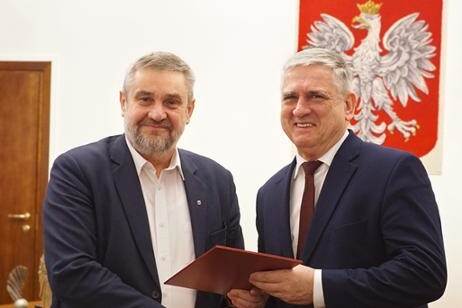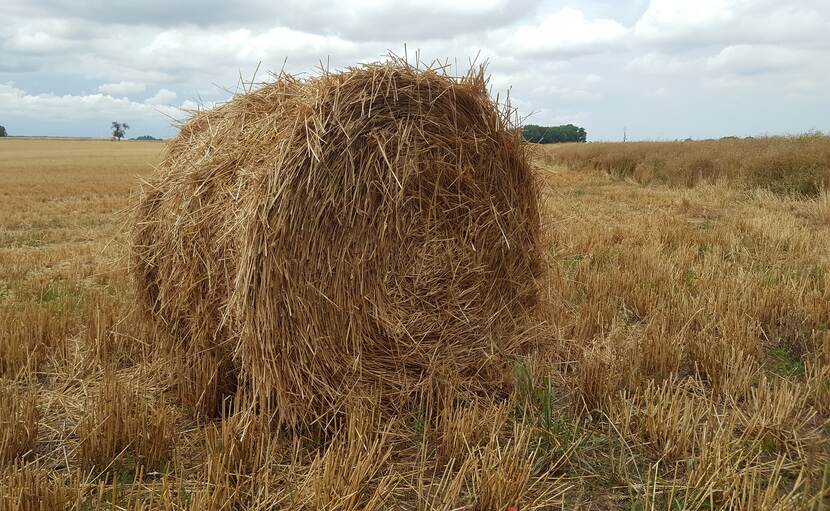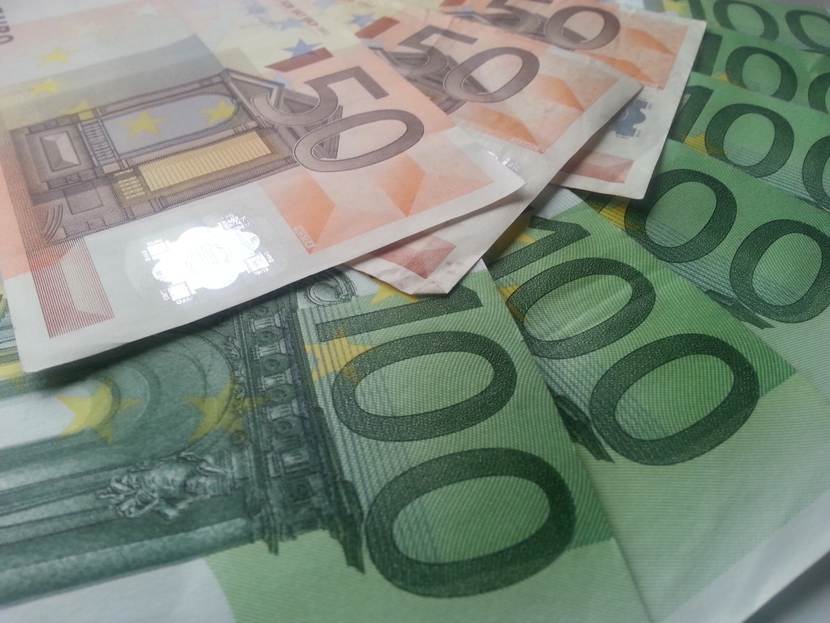Poland, brief agricultural news week 5, 2020
What happened in Poland last week? A brief overview of agricultural news.

What is quality meat for Poles?
At the request of the Union of Meat Industry Employers (UPEMI), company Biostat conducted a study whose main goal was to determine the preferences of consumers regarding the quality of cold cuts, beef, pork and poultry. At the moment pork and poultry are the meats consumed the most in Poland. The results of the study allow to forecast, by 2021-2022, a significant increase in the consumption of good quality meat and cold cuts and a moderate increase in the consumption of poultry and poultry cold cuts. The consumption of beef and pork, as well as beef and port cold cuts will stay on the current level. The study also forecast that 5% of consumers annually will stop eating meat and cold meat. The beef producers will feel it the most.
The study of the quality revealed major problems in defining by Poles what meat and cold cuts quality means. Consumers with the highest awareness base their choices on experience and habits. They trust the producers, show the characteristics of loyal consumers. They choose proven producers and products purchased from a trusted retailer. They don’t experiment. Aware consumers focus on appearance, smell and price, on the basis of these three factors they define quality. Consumers define the quality of cold cuts based on terms, appearance and composition, less often they focus on price, origin, certificate or packaging. The quality of beef, pork and poultry the customers define primarily by terms and appearance, less often they focus on price, composition, packaging, certificate and origin. When they refer to certificates, they want the guarantee of freshness (67%), safety (67%) and taste (64%). Poles define high quality poultry meat by referring primarily to the producer (65%) and country of origin (64%). The most quality-oriented consumers equate the farming region with the origin of meat. If the product is closely connected with the region and comes from a short supply chain, it gains. Regarding cold cuts, the study showed that the best perceived are these of Polish origin and certified, less but still important are also transparent packaging, good smell and visible fragments of fat. Regarding meat, products of Polish origin in transparent packaging are best perceived. A large group of consumers do not buy packaged meat at all. Consumers especially focused on quality, which is a rapidly growing market segment, are reluctant to deal with trays, absorbents, labels covering the product and heat-sealed packaging.
Source: Portalspozywczy.pl

New Undersecretary of State in the Ministry of Agriculture
On 28 January 2020 Prime Minister Mateusz Morawiecki appointed Jan Białkowski as the new Undersecretary of State in the Ministry of Agriculture and Rural Development. The act of appointment was handed by Jan Krzysztof Ardanowski, the Minister of Agriculture and Rural Development, on behalf of Prime Minister Mateusz Morawiecki.
Jan Białkowski has recently worked at the National Center for Agricultural Support (KOWR) as the Deputy General Director. Previously, he held several position in the agricultural administration in West Pomeranian (Zachodniopomorskie) region. He also has extensive practical experience in solving agriculture problems resulting from running his own farm and many years of social activity in the structures of agricultural self-government.
Undersecretary of State Jan Białkowski is a graduate of the Faculty of Agriculture at the Agricultural University in Szczecin. In the ministry, he will be responsible for issues related to finance, land management, and plant breeding and protection. Jan Białkowski replaced Rafał Romanowski, former Undersecretary of State, who ended his work in the Ministry.
Source: gov.pl

Poland’s solar PV capacity nearly tripled over 2019
According to the Polish Minister of Climate, Michal Kurtyka, Poland’s solar PV capacity increased by 175% over 2019. Solar PV capacity rose from 490 MW to 1299 MW, nearly tripling in size. This solar boom is mainly because of an increasing number of ‘prosumers’ in Poland. The rising number of prosumers can be linked to the successful "Mój Prąd" or “My Current” co-financing program.
Prosumers are consumers that produce their own energy in small renewable energy installations. Poland has a special co-financing program for prosumers. The budget of this program is 1 billion PLN, of which 600 million is expected to go to solar PV installations. The total budget will allow the addition of 200.000 micro-installations.
In the first round of the program, 27.000 micro installations with a total capacity of 152 MW were created. The largest solar farm in Poland has a capacity of 3.77 MW. Kurtyka added: “It turns out that in 110 days of such a program, you can co-finance a power 40 times greater than the largest photovoltaic farm in Poland,”. The second edition of the program began January 13th and is expected to increase Poland’s solar PV capacity with 700 MW.
Source: Agropolska

Preliminary statistical data on Polish agriculture
Polish Central Statistical Office published preliminary data on Polish agriculture in 2019. According to these estimates, in 2019 global agricultural production was 3.4% lower than a year ago. Plant production decreased (by 3.9%) and animal production (by 3.0%).
Unfavorable agrometeorological conditions during the vegetation period, mainly drought, contributed to the decrease in plant production. The average annual rainfall in the territory of the country in 2019 was about 10% lower than the average from 1971–2000 (in 2018 the decrease was about 20%). The average air temperature was 2.4 ° C higher than the average from many years. Therefore, lower harvests were noted for potatoes - by 14.1%, sugar beets - by 4.4% and ground vegetables - by 6.3%. However, total cereal production increased by 7.4% (i.e. basic cereals with cereal mixtures, maize for grain, buckwheat, millet and other cereals), and rape and colza - by 6.8%.
Livestock production decreased mainly due to lower than in 2018 production of live pigs - by 4.4% and cattle (including calves) - by 2.1%. However, the production of poultry for slaughter increased by 3.7%, chicken eggs by 2.1% and milk - by 2.2%.
Despite higher supply from the harvest than a year ago, the average prices of wheat and rye increased in 2019. With higher deliveries, the prices of poultry livestock and milk also increased. The reduced supply of potatoes and live pigs resulted in a high increase in the purchase prices of these products. The average prices of most basic agricultural products also increased at marketplaces and were higher than at purchase centers. On the other hand, the average prices of live cattle and young slaughter cattle decreased (on both markets).
In 2019, as in the previous year, an increase in prices of basic agricultural production means was recorded. Nitrogen (by 8.7%) and phosphorus (by 7.4%) fertilizer prices were much higher than in 2018. Prices of seeds, planting trees and cuttings increased by 4.7%, building materials - by 4.6%, and feed - by 3.8%. More expensive there were also agricultural machines and tools, as well as machine service of agricultural and horticultural production - over 3%; prices of veterinary services were also higher - by 2.5%. Farmers had to pay more than in 2018 also for plant protection products (by 1.9%) and for calcium fertilizers (by 1.5%). The high dynamics of fuel prices observed in 2017-2018 slowed down, the price increase in 2019 amounted to 1.0%.
According to preliminary data, the consumption of mineral fertilizers (in the pure NPK component) in the 2018/19 marketing year per 1 ha of arable land decreased by about 8% compared to the amounts recorded in the previous period (up to approx. 130 kg), including about 15% less nitrogen fertilizers (approx. 68 kg). The consumption of calcium, potassium and phosphorus fertilizers was at the previous year's level and amounted to 56 kg, 39 kg and 23 kg per 1 ha of arable land, respectively.
Source: GUS

New year challenges for trade
Trade is the second after industry area of employment in Poland, 1.3 million people work in trade. Starting from January 1st, 2020, the minimum wage in Poland is PLN 2,600, which means an increase of PLN 350 (15.6%) compared to the previous year. At the end of 2023, the minimum wage will be PLN 4,000, which means an increase by more than half compared to the current state.
According to Deloitte Legal experts, changes in law, including an increase in the minimum wage, can significantly affect the retail sector. Retail chains will have to strengthen their employer brand. Increasing the minimum wage may mean pressure for increases among the lowest paid groups of employees and therefore earnings offered by stores now will not be attractive any more. The increase in the minimum wage will not only result in higher employee salary, it will affect other employee benefits. It will result in an increase in state budget revenues from personal income tax and social security contributions. Next to the minimum wage, at the beginning of 2020, the amount of the allowance for night shift increased as well as the minimum compensation for violation of the principle of equal treatment of employees. Further, the limit of payment from the Act on collective dismissals increased to PLN 39,000.
In 2020, the National Labor Inspectorate (PIP) intends to increase the amount of controls to 72 thousand. One of the reasons is the ban on Sunday trade. The year 2020 is the first in which this restriction applies in the target dimension, which means that Poles will be able to shop only on 7 Sundays of the year. PIP has repeatedly questioned the use of exceptions by retailers to the trade ban, in particular in the scope of registering stores as post offices or specialized in sales of e.g. tobacco or souvenirs. Despite PIP's negative opinion on this issue, courts appeal in favor of traders, revoking sentences ordering payment of a fine for violating the ban on Sunday trade.
Source: dlahandlu.pl